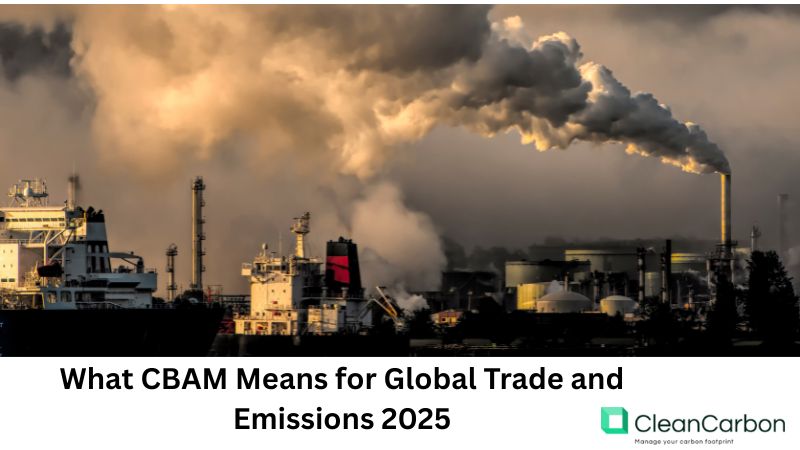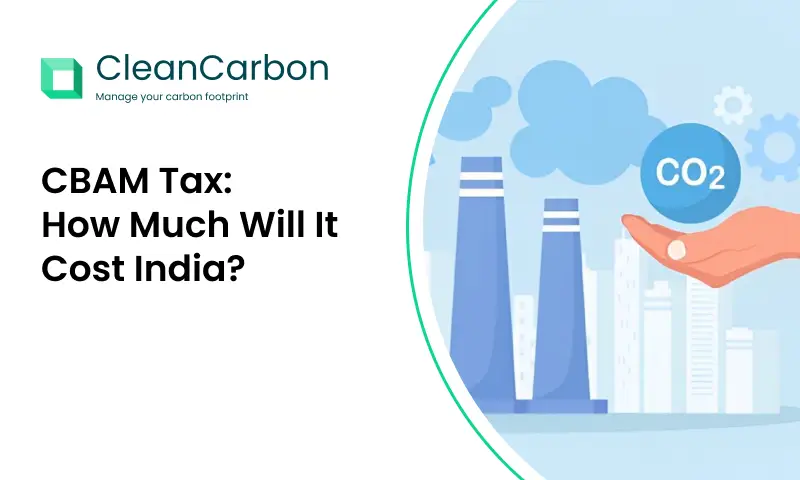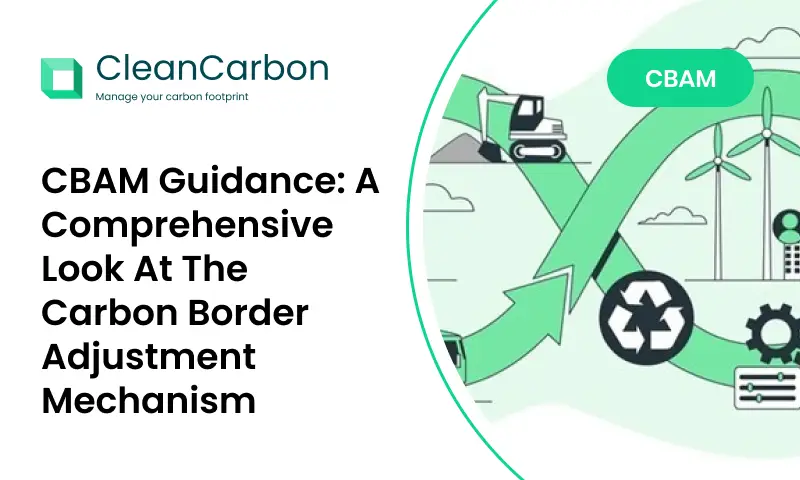CBAM or the Carbon Border Adjustment Mechanism is likely the most significant regulatory innovation shaping the 2025 future of international trade and climate politics. Since the European Union is a global climate leader, CBAM is a trailblazing extension of the EU’s Green Deal, directly confronting carbon leakage and encouraging cleaner industrial processes globally.
Before the first half of 2025, the presence of CBAM is no longer hypothetical. Businesses globally are feeling its presence—some having shifted gears fast enough, others caught unawares. To understand CBAM today is not just being strategic, it is critical to economic balance, regulatory adherence, and sustainable practices.
First Glimpse of CBAM: What Is It?
The CBAM is a carbon-pricing system that seeks to impose prices on imports of carbon-spewing goods into the EU. Its principal objective is to bring European manufacturers, who are already operating under stringent carbon emissions regimes, onto the same level as foreign firms operating under loose environmental regulations. The scheme will ensure that imported goods are required to pay the same price of carbon as locally produced goods.
Introduced with a transition period in 2023, CBAM is arriving on stream gradually but surely, and it is in 2026 that importers can look forward to binding financial commitments. Firms are reporting emissions data currently, but the preparation window for doing that is running out fast. Time is ticking away, and CBAM is moving from publicizing to enforcing.
Why CBAM Matters in 2025 More Than Ever
This year is a turning point. As climate catastrophes rise and investor expectations shift towards greener action, the CBAM rule stands at the intersection of policy, economics, and the green agenda.

It is not just a matter of tariffs or fines. Carbon Border Adjustment Mechanism has become a signifier of the manner in which trade flows are changing under climate change. Countries and companies that are unable to—or will not—turn their carbon strategies are at risk of being driven out of critical European markets. For international producers, particularly in steel, cement, aluminum, fertilizers, electricity, and hydrogen, CBAM has moved from a policy discussion to an operating concern.
CBAM’s Impact on International Supply Chains
Companies that once invested in cheap production now have to factor their carbon footprint into the cost. Carbon Border Adjustment Mechanism changes how international supply chains are produced and operated. It brings environmental clarity into alignment with pricing and logistics.
Multinationals are investing in carbon tracking systems and making agreements with suppliers who can deliver cleaner production methods. The old model of outsourcing manufacturing to places where regulatory costs are lower is being ripped apart. CBAM imposes a new algebra: carbon price plus product price equals overall cost of trade.
Emerging economies are doubly constrained. While all but one rely on exports to the EU, they may lack the underlying infrastructure to track and reduce emissions as fast as Carbon Border Adjustment Mechanism necessitates. But then again, here is an opportunity—an opportunity to spur green innovation, source funds for clean technologies, and set the world on clean industrial practices.
CBAM Compliance: A 2025 Priority
For EU importers, CBAM compliance in 2025 is no box-ticking exercise. It involves rigorous reporting, third-party verification that stands scrutiny, and a forward-looking approach to supply chain decarbonization.
Non-compliance has a cost. Alongside the threat of tariffs, businesses risk losing their reputation and access to environmentally conscious consumers and investors. Open and transparent emissions data, climate-responsible procurement, and dialogue with suppliers are now at the top of the agenda. Compliance is mandatory, not optional, and the cost of entry into the world’s second-largest market.
Is CBAM a Climate Game-Changer or Trade Barrier?
Critics argue that CBAM would work as an effective de facto trade barrier, discriminating against developing nations in disproportionate ways and resulting in retaliatory tariffs. Supporters, on the other hand, view CBAM as a measure required to ensure that international efforts to decarbonize are not thwarted by regulatory arbitrage.
As an incentive to cleaner production, or an experiment in multilateral trade orthodoxy, Carbon Border Adjustment Mechanism is an irresistible force of change. Its broader implications extend beyond the EU: similar mechanisms are being thought about in the UK, Canada, and the U.S., promising a world-wide turn toward carbon-aligned trade policy.
Planning for the Future with CBAM
Forward-looking, CBAM is not a static policy. The scope is likely to be extended to other areas like organic chemicals and polymers and is likely to change with international climate talks. Firms must remain flexible, well-informed, and ready to adapt as the rule evolves.
Digitalization will be the center of attention. Advanced data analysis, carbon accounting software, and AI-driven risk assessment platforms will become the need of the day to deal with the complexities of Carbon Border Adjustment Mechanism. The investors in sustainable innovation today will be tomorrow’s market leaders.
Last Thought: CBAM Is Here to Stay
If 2023 and 2024 were preparation and years of incredulity, 2025 is the year of action. CBAM is now longer a notion—it’s an operational and financial reality. The companies that recognize its significance early on, understand its nuances, and include it as part of strategic planning will survive not just this transition, but lead it.
For everyone who is involved in global business, production, or sustainability, the moment has arrived to take Carbon Border Adjustment Mechanism seriously. The game has new rules, and with them, the future of global commerce.






